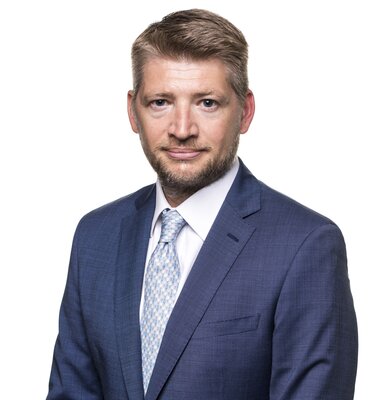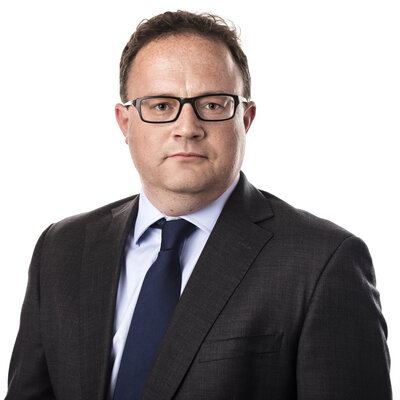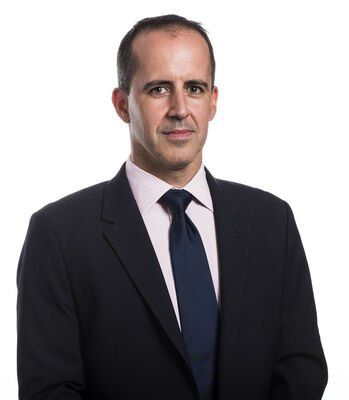
Introduction
Our Investment Outlooks for 2022
The range of Polar Capital’s actively managed funds means there is a breadth of opinions we would like to share with you. The views expressed in the outlooks for 2022 range from the US (and the global growth of corporate America) across to Asia (“as China picks itself up off the floor”), and from healthcare (M&A acceleration) to financials (strength from consumers and corporates).
Polar Capital’s investment teams are autonomous, which means that while there are plenty of common themes across their outlooks for 2022 – inflation; Fed tapering; technology disruption; supply-chain shortages; COVID-19 – each team’s investment philosophy and strategy means the impact of these themes can be very different.
Begin

China
Investors should put short-term volatility aside as China reaches an inflection point
2021 was a year of regulation, policy tightening and financial de-risking in China. The scale and speed of regulatory actions created a crescendo of panic which was further augmented by rising default risk at a few recklessly leveraged property developers. The rhetoric on regulation has changed and we believe the systematic risk from an Evergrande implosion is very low.
Thanks to these tightening regulatory and macro policies, China will exit 2021 with slowing growth momentum. As a result, growth will return as a top priority again as we enter 2022 and we expect to see a more decisive pro-growth shift soon. After a more than 20% pullback, China equity is valued attractively in both absolute and relative terms. In our opinion, receding regulatory cycle and loosening macro policy will provide confidence on corporate earnings growth and drive a meaningful re-rating.
Some of the worst hit sectors are likely to drive performance in 2022. There are signs of stabilisation and reduced competitive intensity in internet and technology. For healthcare, the worst pricing environment is likely over, but recovery is subject to COVID-19 developments. In consumer, pro-growth policy shift is supportive of consumption, but China’s zero COVID-19 policy creates short-term volatility.
The strong trends in the adoption of factory automation and the rising penetration of electric vehicles are likely to continue for many years to come. As such, while valuations are less compelling, we still see attractive stocks capable of delivering robust growth with the potential for significant upside.
As China picks itself up off the floor, there are plenty of opportunities in well-priced and high-quality companies with high structural growth.
Polar Capital China Team
03 December 2021
Next

Convertible Bonds
Flexibility of convertibles offers investors a way to navigate increasingly challenging markets
After the exceptional strength of 2020, 2021 has been a much more challenging year for convertibles, with many of the tailwinds from 2020 turning into headwinds this year. However, we believe these are not durable headwinds and that the asset class remains attractively positioned and valued.
The strength of issuance over the past 18 months has resulted in the asset class and opportunity set being larger than it has been in decades. We believe convertible valuations remain attractive and, with interest rates having risen from the lows, equity volatility is likely to remain elevated. This should provide a significant tailwind to the convertible asset class going forward.
While we are generally constructive, we are cognisant there are also risks. These include credit spreads that remain historically tight, interest rates that could rise, a further rotation away from longer-duration growth equities, and the potential that risk assets in general are late cycle and supported by a declining amount of supra-normal liquidity. However, these are risks investors in general must address, not just those in the convertibles market.
Convertibles have historically been well placed to address each of these, as their low duration protects against interest rates and credit spreads and their bond floors provide late-cycle protection and defensiveness. Also, the breadth of the opportunity set noted above provides convertible investors with more ability to navigate equity market rotations than they have ever had – and arguably more than the mega-cap-centric equity indices provide.
Consequently, despite the challenges of 2021, we believe the asset class remains well positioned to provide both fixed income and equity investors with superior risk-adjusted return potential than their native asset classes.
Polar Capital Global Convertible Team
06 December 2021
Next

Emerging Markets
The challenges and opportunities for emerging markets
Jorry Noddekaer gives his outlook for the year ahead, outlining why he feels we are getting closer to an inflection point for emerging markets. He explains why he believes some of the key headwinds – US tapering policy on the back of inflationary pressure; Evergrande; China’s internet regulation; supply-chain disruption – will ease, along with his thoughts on specific sectors and countries he finds as particularly favourable.
Recorded on 6 December 2021
Next

European Income
Time for Europe to reclaim favour with income investors
After the great pandemic dividend reset of 2020, the outlook for European dividends is bright, in our opinion. Most unsustainable dividend payout ratios were swept away as the taboo of dividend cuts was temporarily lifted. 2021 has already seen a nice bounce in dividends from the distressed levels of 2020 and we expect mid-single-digit dividend growth to continue over the medium term for our holdings.
Excessive economic stimulus has elevated the valuations of many assets to levels that look vulnerable to us. In this context, we believe the Fund’s c4% dividend yield looks extremely generous relative to our companies’ own corporate bonds, government bond yields in negative real territory and expensive growth stocks. We have high conviction the Fund will deliver positive real dividend growth over the medium term.
The dividend investment style has been out of favour as valuation multiple re-ratings drove an understandable preference for unusually high capital gains on offer. More recently, there has been clear evidence of excessive risk-taking within financial markets. Our naturally cautious approach has been a headwind to recent relative performance. We believe the absolute cheap valuations of many of our defensive stocks leave them well positioned into tightening monetary conditions.
Our Fund dividend grew faster than the index before the pandemic and was more resilient during the pandemic. It is our high conviction that unusual market conditions have led to a material mispricing of the underlying cash flows of the stocks we own. We expect a normalisation of monetary policy to favour the two pillars of our investment process – valuation discipline and a preference for defensive stocks.
Polar Capital European ex-UK Income Team
06 December 2021
Next

European Opportunities
European road to recovery will lead us to find stronger, more resilient companies
We are learning to live with the virus. Corporate profits in Europe recovered strongly in 2021, even though the year ends much as it began amid uncertainty, a new and likely more transmissible COVID-19 variant and tightening government restrictions. While the pandemic continues to disrupt activity and supply chains, the economic impact of each wave has progressively diminished as medical treatments have advanced, and societies and businesses have adapted.
Supply-chain disruption will not be resolved overnight, but our discussions with companies suggest they are improving at the margin and should continue to do so in 2022. While demand remains robust, inventories are still low and will need to be rebuilt – a restocking cycle lies ahead. Furthermore, in 2022 Europe will see the first deployment of the EU Recovery Fund which should provide a significant fiscal boost in 2022-23, especially to countries in southern and eastern Europe.
Our companies have navigated the many different and often unforecastable challenges thrown at them in recent years and are generally emerging stronger and more profitable. In this environment, we continue to favour companies that have demonstrated resilience and agility and with pricing power.
08 December 2021
Next

Financials
Financials sector poised to benefit from a rising rate environment
The resilience of the banking sector over the past two years highlights how positively banks have reacted to the steps regulators have taken since the global financial crisis. Today, banks have strong balance sheets, plenty of liquidity and are more cautious in their lending appetite.
As a consequence, they are well positioned to benefit from the continuing recovery and opening up of economies as the pandemic subsides, notwithstanding any short-term impact from new COVID-19 variants.
While we recognise the uncertainties, we also see the potential for inflation pressures to persist and against that background we believe financials, in particular banks, are a strong insurance policy against higher inflation, bond yields and interest rates.
We believe the tailwinds remain very positive and future threats, in the form of a meaningful increase in defaults over the short term, should be limited by the robust financial health of both consumers and corporates. At the same time, the sector continues to trade on historically low valuations relative to broader equity markets and would be a beneficiary of any further rotation into value.
Looking ahead, we remain constructive on the outlook for the sector, with longer-term opportunities in smaller and mid-cap banks, fintech, asset management and insurance as well as emerging markets.
Polar Capital Global Financials Team
09 December 2021
Next

Healthcare
What is the outlook for healthcare in 2022?
COVID-19 has had a huge, direct impact across the healthcare value chain over the past two years, though Gareth Powell is now looking ahead at its indirect impact, for example on the backlogs for procedures, diagnostic tests and so on. Over the short term (M&A; consolidation) and longer term (outsourcing; innovation), he assesses where he is finding the best investment opportunities, across the cap scale, and those areas where he feels healthcare will claw back the gap with this year’s global equity performance.
Recorded on 6 December 2021
Next

Insurance
Material growth for insurance industry could offer compelling opportunities
Looking ahead to 2022, we expect book-value growth, the long-term driver of stock performance, to increase from the c10% we expect for 2021. Despite the ongoing pandemic and the fifth consecutive year of heightened catastrophe events, well-managed insurers continue to demonstrate resilient operational performance.
The insurance broker Marsh estimates a compounded insurance price rise of almost 50% over the past three years for its Global Pricing Index. This is resulting in strong top-line growth and material improvements in underwriting margins for our companies. Going forward, reported company results might also be helped by rising investment income as short-term bond yields move higher in a more inflationary environment.
Many investors do not view the non-life insurance industry as a growth industry but that might be about to change. Swiss Re recently estimated the non-life insurance industry will grow at a 4.3% CAGR to 2040 or c5% excluding motor which is more representative for the Fund’s growing opportunity set given its significant underweight in that line of business. Increased awareness of risk from ESG reporting will be a further tailwind.
Despite excellent fundamentals and increased earnings power, the US industry price-to-book was c140% at the end of November, meaningfully below the c150% pre-pandemic level. The Fund’s price to book is also trading at a discount to the benchmark which happens rarely and indicates quality insurers remain on sale. Current valuations and expected double-digit book-value growth should give cash-on-cash returns in the high single digits which are compelling in today’s investment environment.
Polar Capital Global Insurance Team
06 December 2021
Next

Japan
Fiscal stimulus and Japan’s grand reopening should drive above trend growth
After two years in which global business has been plagued by uncertainty, alternating between lockdowns and reopening, it appears we may be on the home straight to some vaguely recognised sense of normality in 2022. Although there may be a sense of déja vu given the premature optimism that was also evident in the closing stages of 2021, we have hope that the arsenal of vaccines and treatments will lead to the upcoming year being significantly more recognisable.
Clearly, in the short term there remains more measurable risk following the emergence of the Omicron variant that has clouded the short-term economic outlook with numerous governments reimposing travel and social distancing restrictions as a precaution until the effectiveness of current vaccines against it can be assessed. From an investor’s perspective, the key question is whether the negative consequences from the new variant will prove significant enough to alter the timescale for monetary tightening measures in the US given the current intense focus on inflationary pressures.
In Japan, COVID-19 case numbers have fallen back to very low levels and the positive economic impact from its initial reopening is starting to emerge. Looking forward to 2022, we believe a combination of the pent-up demand linked to reopening and the government’s large fiscal stimulus plan all but guarantee a period of significantly above trend growth which should be a tailwind to corporate profit growth at a time when the yen is trading at a favourable level for the manufacturing sector.
Polar Capital Japan Value Team
07 December 2021
Next

Smart Energy
Structural growth of Smart Energy sector to continue accelerating
Thiemo Lang discusses the strong underlying trends that he believes will continue to drive the smart energy sector in the coming year, including the improving economics of production and governmental frameworks put in place to accelerate the decarbonisation of the energy sector. Thiemo also explains how the Sustainable Thematic Equity Team are positioning the Smart Energy Fund, to continue to capitalise on strong structural growth in areas such as clean power generation or green hydrogen infrastructure.
Recorded on 15 December 2021
Next

Smart Mobility
Electrification of the transport sector will continue to gather pace
Thiemo Lang discusses the continued growth in the electric vehicle market, and developments in areas such as autonomous driving, that see the Sustainable Thematic Equity Team remain constructive on the smart mobility sector in 2022. As the transport sector continues to embrace unprecedented transformation and electrification, Thiemo highlights the areas within the smart mobility value chain that they seeking exposure to, such as EV manufacturers, power semiconductors and new developments in the area of driverless mobility.
Recorded on 15 December 2021
Next

Technology
Technology in 2022: Valuations, inflation and accelerating A&AI
Nick Evans discusses how the prospects for inflation – and therefore Fed tapering and rate tightening – are impacting some of the most favoured high-growth areas. He also talks about how he is positioning the Polar Capital Global Technology Fund as a result, where he is adding or reducing exposure, and why he sees artificial intelligence as a key theme in and beyond 2022.
Recorded on 6 December 2021
Next

UK
UK equities offering bargain prices for leading companies
It is a source of frustration but also opportunity that the UK valuation discount did not close in 2021. The UK remains on a material valuation discount to the rest of the world even when sector adjusted. This is despite the most dramatic downside risks of a new relationship with the EU failing to materialize and an advanced vaccine program. As long as the UK remains out of favour, it is a particularly good place to go bargain hunting and the Fund itself remains at a significant discount to the market, creating a double discount.
The resumption of value’s outperformance which paused in mid-2021 requires a re-acceleration of economic growth which we are beginning to see the seeds of. The outlook for returns on invested capital is more nuanced. We believe a company’s performance compared to its peers will matter more than the sector it is in. It will finally become apparent that those winning share within a sector will be able to drive profitable upgrades.
Despite the complex picture, consumer spending should be robust in 2022 while business investment has inflected higher. The forecast economic growth next year is not consistent with the UK’s valuation and, as long as this persists, M&A is likely to continue. We will stick to our knitting, investing in cheap shares with improving returns on invested capital and solid balance sheets.
Polar Capital UK Value Opportunities Team
06 December 2021
Next

US
Investors take comfort; corporate America remains the powerhouse of the global economy
2021 saw strong growth in the US economy and corporate profits as both recovered impressively from the shock of COVID-19. While new strains of COVID-19, and specifically the recently discovered Omicron variant, suggest the pandemic is not going to disappear quickly, medical science is increasingly getting to grips with the virus, and society and businesses are learning to adapt.
One significant development in the aftermath of the economic shock caused by the pandemic has been inflation emerging in goods, services and wages. Companies’ ongoing intentions to increase prices and wages as well as ongoing supply-chain issues suggest to us that inflation is unlikely to go away in the near term. Whether it persists for longer is too difficult to forecast. However, the equity market, in many respects, seems to be pricing a previous environment of low inflation and interest rates, and any sustained period of higher inflation could result in a somewhat different investing environment to what we have been used to in recent years.
Industry change is a constant and will transcend some of the drivers highlighted above. We continue to believe this necessitates a long-term mindset when assessing sustainable value creation. This is necessary when assessing both incumbents as well as the disruptors which, given the rate of change, in some cases are themselves being disrupted within a shorter period of time than it seems was historically the case. This feature might result in investors starting to question the growth extrapolation implicit in the valuations of some equities.
While there are parts of the equity market that look overextended from a valuation perspective, we believe there remain plentiful opportunities to invest in well-run businesses demonstrating strong compounding potential at attractive valuations. The choice of such companies is an ongoing clear competitive strength of the American market and one we look to take advantage of with our multi-cap approach. We continue to find attractively valued compounding opportunities from a variety of industries whether they be in business with very strong secular growth prospects, solid cash flow compounders or those with strong recovery potential.
Overall, there is nothing to suggest to us that corporate America will not continue to grow and prosper in the near, mid- or long term. Moreover, American businesses continue to expand their share of global profits. This is happening more and more in industries that were once considered localised and where that localisation is being disrupted by technology.
Polar Capital North American Team
06 December 2021







